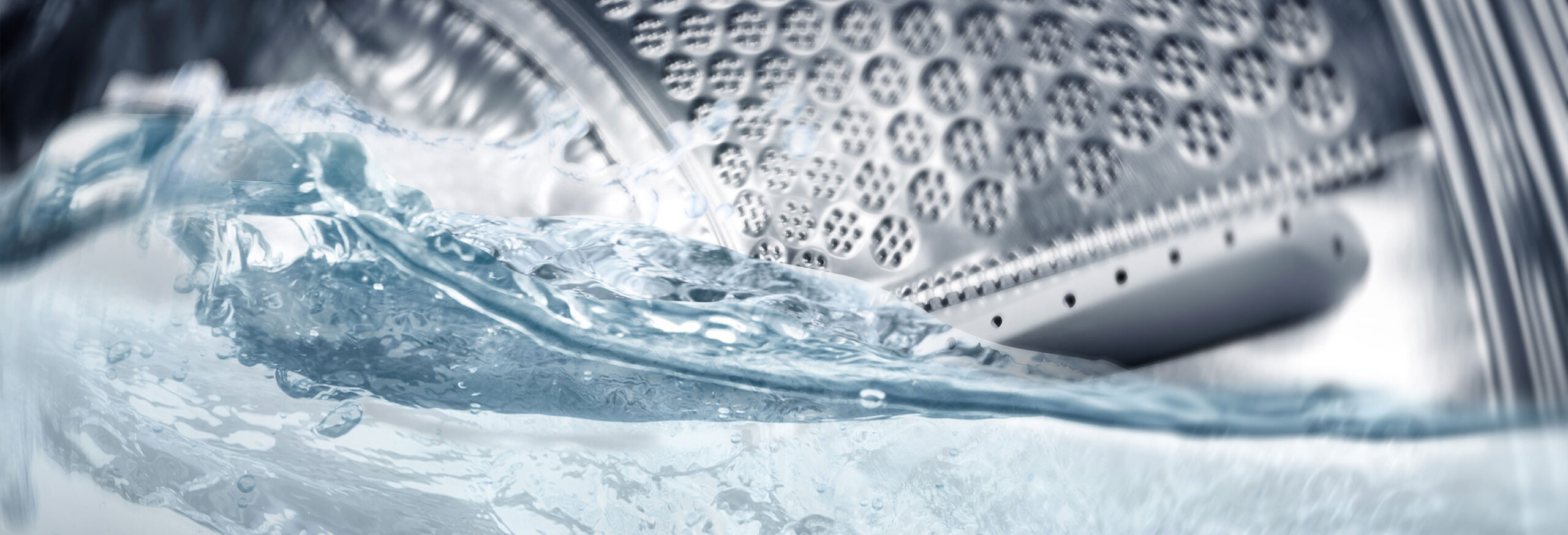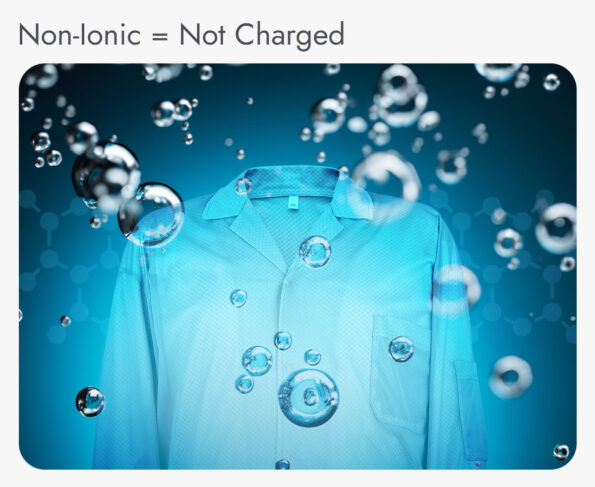
ESD Lab Coat Washing Procedure
Proper care and maintenance play a vital role in preserving the effectiveness of ESD Lab Coats. Ensuring that these specialized garments are washed according to recommended instructions not only enhances their longevity but also safeguards their essential electrostatic discharge properties.
Washing Instructions: Machine Wash Cold or Warm. Do Not Bleach. Cool Tumble Dry or Hang. Remove Promptly. Use only Non-Ionic Detergents.
Following these guidelines diligently ensures the continued reliability and performance of your ESD Lab Coat, allowing it to provide optimal protection.
It’s important to acknowledge that every cycle in a washing machine contributes to the gradual degradation of an ESD Lab Coats’s quality. Generally, smocks certified under IEC 61340-5-1 guidelines can withstand washing around 90 to 100 times, provided non-ionic detergents are used, before considering the need for a replacement.

Use of Detergents
Detergents typically consist of enzymes, bleaches, surfactants, and builders.
Among these components, surfactants in many detergents comprise anionic (negatively charged) alkalis, which effectively interact with water to eliminate oily dirt and stains.
However, the presence of these anionic alkalis can deplete ESD Garments of their positive ions, rendering them prone to carrying negative charges. Consequently, it is advised to refrain from using detergents when laundering ESD Garments.
In instances where the use of detergents or fabric softeners is unavoidable, opting for liquid detergents designed for delicate fabrics like silk or wool is recommended. These formulations, often termed as non-ionic detergents, lack alkalis.
Non-ionic detergents maintain a neutral pH (neither acidic nor alkaline) and generate electrically neutral particles when introduced to water. This choice helps preserve the electrostatic properties of ESD Garments during the washing process.
Use of Chlorine Bleach
Woven into ESD garments in a grid pattern, the black carbon threading is a crucial component that forms a protective shield around nearby electronics, preventing the transmission of static from your clothes and the skin beneath. This threading not only imparts conductivity to ESD clothing but also establishes its characteristic “static shielding.”
It’s essential to note that chlorine bleach poses a threat to the integrity of the carbon threading, as it attacks carbon bonds, leading to their destruction.
In contrast, non-chlorine bleaches, commonly found in “color-safe” commercial bleaches activated by contact with oxygen in water, are oxidizing bleaches. Examples include hydrogen peroxide, sodium percarbonate, and sodium perborate. While not as harmful to the carbon threading as chlorine bleach, these non-chlorine bleaches are alkaline and, with repeated use, have the potential to remove carbon.

Drying Method
The combination of cotton and polyester threading in ESD clothing is susceptible to warping at elevated temperatures.
For optimal care, it is advised to hang dry the garment whenever possible. Alternatively, if machine drying is necessary, use a low tumble dry setting.
